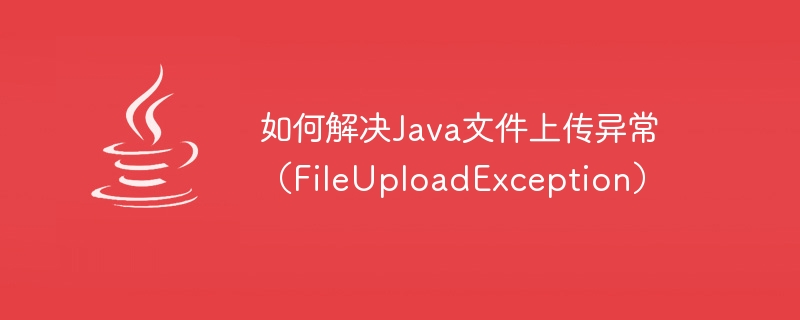

How to solve Java file upload exception (FileUploadException)
A problem often encountered in web development when uploading files is FileUploadException (file upload exception). It may occur due to various reasons such as file size exceeding limit, file format mismatch, or incorrect server configuration. This article describes some ways to solve these problems and provides corresponding code examples.
In most scenarios, it is necessary to limit the file size to prevent malicious users from uploading overly large files and causing server load. Too high or the network transmission time is too long. In order to limit the file size, we can use the setFileSizeMax() method provided in the Apache Commons FileUpload library.
ServletFileUpload fileUpload = new ServletFileUpload(); fileUpload.setFileSizeMax(10 * 1024 * 1024); // 限制文件大小为10MB
Another common problem is to restrict the format of uploaded files, such as only allowing the upload of pictures or document files. We can use the setFileContentType() method to limit the MIME type of the file.
ServletFileUpload fileUpload = new ServletFileUpload(); fileUpload.setFileContentType(Arrays.asList("image/jpeg", "image/png", "application/pdf")); // 只允许上传JPEG、PNG和PDF文件
Sometimes there will be some problems with file upload, such as file damage or upload interruption. In order to ensure the integrity of the file, we can use the isIncomplete() method provided by the Apache Commons FileUpload library to check whether the file is uploaded completely.
ServletFileUpload fileUpload = new ServletFileUpload(); if (fileUpload.isMultipartContent(request)) { try { List fileItems = fileUpload.parseRequest(request); for (FileItem fileItem : fileItems) { if (!fileItem.isFormField() && !fileItem.isIncomplete()) { // 处理上传的文件 // ... } } } catch (FileUploadException e) { e.printStackTrace(); } }
Sometimes file upload exceptions may be caused by server configuration issues. For example, a FileUploadException may result if the size of the uploaded file exceeds the server's configured limit. In order to solve this problem, we need to modify the relevant configuration files of the server.
For example, for Tomcat server, you can edit the web.xml file and add the following code to the
10MB 20MB 0
The above configuration will limit the maximum size of the uploaded file The size is 10MB, the maximum size requested is 20MB, and the file is written to disk instead of memory.
Summary
The key to solving Java file upload exceptions (FileUploadException) is to limit the size and format of uploaded files and check the integrity of the files. We can use the methods provided by the Apache Commons FileUpload library to implement these functions and modify the relevant configuration files of the server as needed. I hope the solutions provided in this article are helpful to you.
The above is the detailed content of How to solve Java file upload exception (FileUploadException). For more information, please follow other related articles on the PHP Chinese website!
